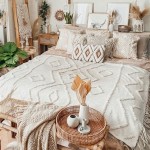Reptile Room Decor Ideas: Creating Functional and Aesthetically Pleasing Habitats
Reptile keeping has experienced a surge in popularity, leading to a growing interest in creating visually appealing and functionally appropriate habitats for these fascinating creatures. Reptile room decor is more than just aesthetic enhancement; it directly impacts the well-being of the reptiles by providing enrichment, security, and the necessary environmental conditions for optimal health. Designing a reptile room requires careful consideration of the specific needs of the reptiles housed within, encompassing factors such as species-specific requirements, spatial constraints, and budgetary limitations. An effective reptile room design balances the practical needs of the reptiles with the aesthetic preferences of the owner, resulting in a harmonious and enriching environment for both.
The process of designing a reptile room begins with a thorough understanding of the individual needs of each reptile species. Different species require vastly different environmental parameters, including temperature gradients, humidity levels, and lighting conditions. Terrestrial species, such as leopard geckos and bearded dragons, require different substrates and basking areas compared to arboreal species like crested geckos and chameleons. Furthermore, the natural behaviors of each species must be considered when selecting and arranging decor. Some reptiles prefer open spaces for basking, while others require numerous hiding places to feel secure. Thoughtful planning ensures that the reptile room is not only visually appealing but also contributes to the overall health and happiness of the reptiles.
Prioritizing Biologically Appropriate Decor
Biologically appropriate decor mimics the natural environment of the reptile species being housed. This approach provides a sense of security and allows the reptiles to exhibit natural behaviors. For example, desert-dwelling reptiles like bearded dragons thrive in environments with rocky outcrops, sandy substrates, and sparse vegetation. Incorporating these elements into the enclosure helps replicate their natural habitat and can reduce stress levels. Conversely, tropical species such as green tree pythons require high humidity, dense foliage, and climbing branches to mimic their rainforest habitat.
Substrates are a foundational element of biologically appropriate decor. The appropriate substrate depends largely on the reptile species' natural environment and humidity requirements. Sand is suitable for desert species, while coconut fiber or cypress mulch is better suited for tropical species. Furthermore, the substrate should be easy to clean and maintain to prevent the buildup of harmful bacteria and fungi. Live plants add another layer of realism and can help maintain appropriate humidity levels in tropical enclosures. Non-toxic plants such as pothos, snake plants, and bromeliads are popular choices, providing both visual appeal and functional benefits.
Rock structures, caves, and branches are essential for providing basking areas, hiding places, and climbing opportunities. These elements should be carefully selected to ensure they are stable and non-abrasive. Natural rock formations can be aesthetically pleasing and provide a variety of textures for the reptiles to explore. Commercially available reptile caves and hides offer a safe and secure refuge. Branches and vines, either natural or artificial, provide climbing opportunities for arboreal species and add visual interest to the enclosure. All decor items should be thoroughly cleaned and disinfected before being introduced into the reptile room to prevent the introduction of parasites or pathogens.
Optimizing Functionality and Safety
Beyond biological appropriateness, the functionality and safety of reptile room decor are paramount. The arrangement of decor should facilitate easy cleaning and maintenance. Overcrowding the enclosure with too many items can make it difficult to access and clean the substrate, potentially leading to unsanitary conditions. Strategically placed decor can also help create temperature gradients, which are essential for many reptiles to thermoregulate effectively.
Temperature gradients are achieved by creating a warm basking area and a cooler area within the enclosure. This allows reptiles to move between different temperature zones to regulate their body temperature. Basking areas can be created using heat lamps or ceramic heat emitters, while cooler areas can be created by providing shade and access to water. The placement of decor can help direct airflow and create microclimates within the enclosure, further enhancing the temperature gradient.
Safety is another critical consideration when selecting and arranging reptile room decor. All decor items should be non-toxic and free from sharp edges or small parts that could be ingested. Heavy items, such as rocks and branches, should be securely anchored to prevent them from falling and injuring the reptiles. Electrical cords should be routed safely, out of reach of the reptiles, to prevent electrocution. Regular inspection of the decor is essential to identify and address any potential hazards. Any damaged or deteriorated items should be replaced promptly to maintain a safe and healthy environment for the reptiles.
The choice of lighting is also crucial for both functionality and the well-being of the reptiles. Many reptiles require UVB lighting for proper calcium absorption and bone development. UVB bulbs should be replaced regularly, as their output diminishes over time. In addition, providing a proper day/night cycle is essential for regulating the reptile's circadian rhythm. This can be achieved using timers to control the lighting schedule. Ambient light in the reptile room should be adequate to allow for natural behavior patterns but should not be so intense as to cause stress.
Enhancing Aesthetics and Personalization
While functionality and safety are paramount, aesthetic considerations can significantly enhance the enjoyment of the reptile room. Personalizing the decor to reflect individual tastes and styles can create a more visually appealing and engaging environment. However, it is essential to ensure that aesthetic enhancements do not compromise the biological appropriateness or safety of the enclosure.
Backgrounds are a simple and effective way to enhance the aesthetic appeal of the reptile enclosure. Backgrounds can be made from a variety of materials, including cork bark, foam, or printed vinyl. Natural-looking backgrounds that mimic the reptile's natural habitat can create a more immersive experience. Furthermore, backgrounds can provide additional climbing surfaces and hiding places, adding functional benefits as well.
Custom-built enclosures offer the ultimate level of personalization. Custom enclosures can be designed to specific dimensions and specifications, allowing for the integration of unique features such as waterfalls, caves, and basking platforms. However, custom enclosures can be more expensive than commercially available enclosures and require careful planning and construction. Professional reptile enclosure builders can provide expert guidance and ensure that the enclosure meets all safety and functional requirements.
Themed enclosures can be a fun and creative way to express personal style. Themes can be based on specific habitats, such as a rainforest theme with lush vegetation and cascading waterfalls, or a desert theme with rocky outcrops and sandy substrates. When choosing a theme, it is essential to ensure that all decor items are safe and appropriate for the reptile species being housed. The use of color can also significantly impact the aesthetic appeal of the reptile room. Earth tones and natural colors tend to create a more calming and harmonious environment, while brighter colors can add visual interest and energy.
Finally, consider incorporating elements that reflect personal interests and hobbies. This could include displaying artwork, photographs, or collections related to reptiles or nature. However, it is important to avoid cluttering the reptile room with too many items, as this can create a stressful environment for the reptiles. The goal is to create a balanced and harmonious space that is both aesthetically pleasing and functionally appropriate for the reptiles.

Reptile Rack Animal Room Dream Rooms

Reptile Room In 2025 Animal House Rooms

7 Reptile Room Ideas Forest Bedroom

Reptile Oasis Room Animal Rack

7 Reptile Room Ideas Forest Bedroom

Decorating A Bedroom With An Animal Theme Visionbedding

16 Home Aquarium Tips You Need To Try

Pin By S Kelly On House Ideas Animal Room Terrarium Reptile Habitat

Terrarium Room Reptile Animal Dark Home Decor

Pin On Reptile Room







